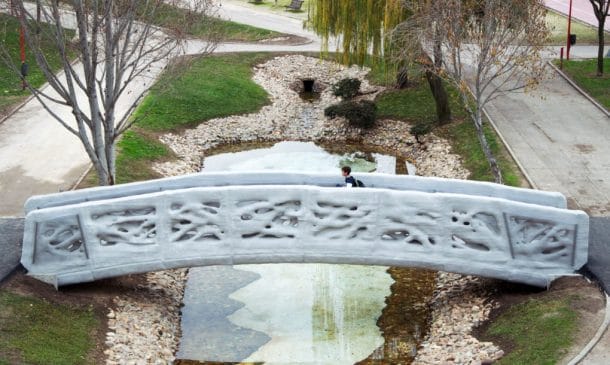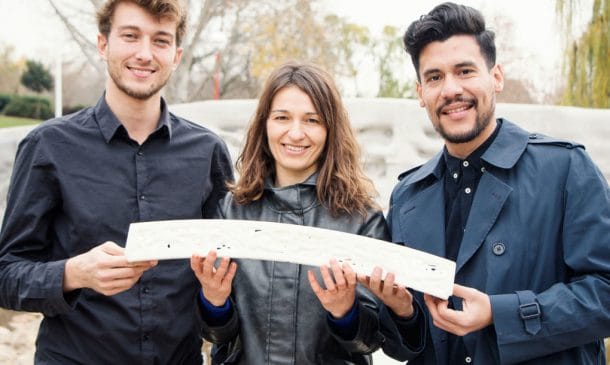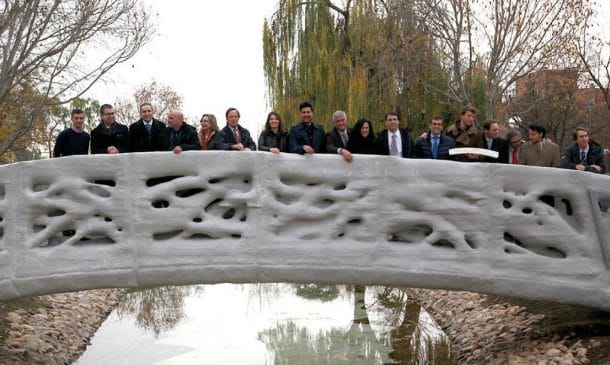Undoubtedly, 3D-printing is the future of manufacturing. Recently, one of its limitless applications was on display in the form of a fully functional, 3D-printed pedestrian bridge. The bridge was installed in the park of Castilla-La Mancha in Alcobendas, Madrid, Spain. The 40-foot-long bridge was inaugurated on December 14th. It consists of eight parts, with each one created by layers of fused concrete powder which are micro-reinforced with thermoplastic polypropylene.

The astonishing marvel of construction was taken up by the Institute of Advanced Architecture of Catalonia, which is a Barcelona-based research and education center. The center is working with a closely knitted group of architects, mechanical and structural engineers, along with the district admin who together brings life to such projects.

Enrico Dini was the leader of the team working on the project, and is in fact, the “man who prints houses.” Dini took up the challenge of developing the D-Shape; a large 3D printer that could print the bridge. He used a special binding sand that attached layer after layer of solid rock.

The Alcobendas bridge is a significant achievement in the avenues of civil engineering. The IAAC has hailed the construction as a “milestone for the construction sector at international level.” The IAAC also leveraged parametric modeling to be a depiction of not only
“complexities of nature’s forms” but also optimize the distribution of raw materials.”

The institute added,
“The computational design also allows to maximize the structural performance, being able to dispose the material only where it is needed, with total freedom of forms, maintaining the porosity thanks to the application of generative algorithms and challenging the traditional techniques of construction,”
The technique, if replicable, across all kinds of structures and buildings, will result in producing less waste, providing greater stability and will allow the construction industry to become more efficient than ever before!
We would like to know your thoughts on this 3-D printed bridge. Comment below!


